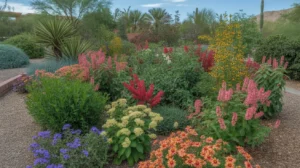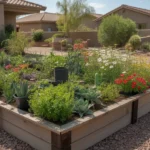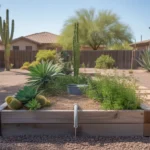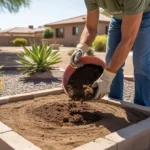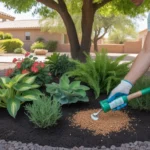As the warm spring sun returns to the Southeast Valley, it’s the perfect time to show your garden some love. With a bit of targeted care and attention, you can transform your outdoor space into a lush, thriving oasis that will be the envy of the neighborhood. From pruning and planting to watering and fertilizing, these spring garden care tips will help you revitalize your yard and enjoy a beautiful, bountiful growing season ahead.
Prune and Tidy for a Fresh Start
Before the growing season kicks into high gear, take some time to clean up your garden and prune back any damaged, dead, or overgrown branches. This not only improves the overall appearance of your plants but also promotes healthy new growth. Be sure to use clean, sharp pruning tools to avoid damaging your plants.
As you tidy up, keep an eye out for any signs of disease or pests. Remove any affected leaves or branches and dispose of them properly to prevent the spread of problems. If you notice significant issues, consult with a local gardening expert or extension office for guidance on treatment options.
Don’t forget to clean up any debris that may have accumulated over the winter, such as fallen leaves or dead annuals. This will help prevent disease and make room for new growth. Consider adding the organic matter to your compost pile to enrich your soil later on.
Refresh Your Soil and Fertilize
Spring is the ideal time to rejuvenate your garden beds with fresh soil and amendments. Gently loosen compacted soil with a garden fork, being careful not to damage any existing plant roots. Mix in a generous layer of compost or well-rotted manure to improve soil structure, drainage, and fertility.
Once your soil is refreshed, give your plants a boost with a slow-release, organic fertilizer. Follow the package instructions carefully to avoid over-fertilizing, which can damage your plants. Consider using a fertilizer specifically formulated for the types of plants you’re growing, such as a citrus fertilizer for fruit trees or a rose fertilizer for your rose bushes.
If you’re not sure about your soil’s nutrient levels, consider having a soil test done. Many local cooperative extension offices offer affordable soil testing services. The results will help you determine which amendments and fertilizers your garden needs for optimal health and growth.
Plant for a Vibrant Spring Display
Spring is the perfect time to add new plants to your garden. Consider incorporating a mix of annuals and perennials for a colorful, dynamic display. Some great options for the Southeast Valley include:
- Pentas: These sun-loving, low-maintenance flowers bloom in shades of red, pink, purple, and white.
- Angelonia: Also known as summer snapdragon, these upright plants feature spikes of colorful flowers and thrive in the heat.
- Gaillardia: These tough, drought-tolerant perennials produce bright, daisy-like flowers in shades of yellow, orange, and red.
- Salvia: With numerous varieties available, salvias offer a range of colors and sizes to suit any garden. They’re also great for attracting hummingbirds and butterflies.
When planting, be sure to choose locations that match each plant’s sunlight and soil requirements. Space plants according to their mature size to avoid overcrowding, and water them well after planting to help them establish strong roots.
Implement a Smart Watering Strategy
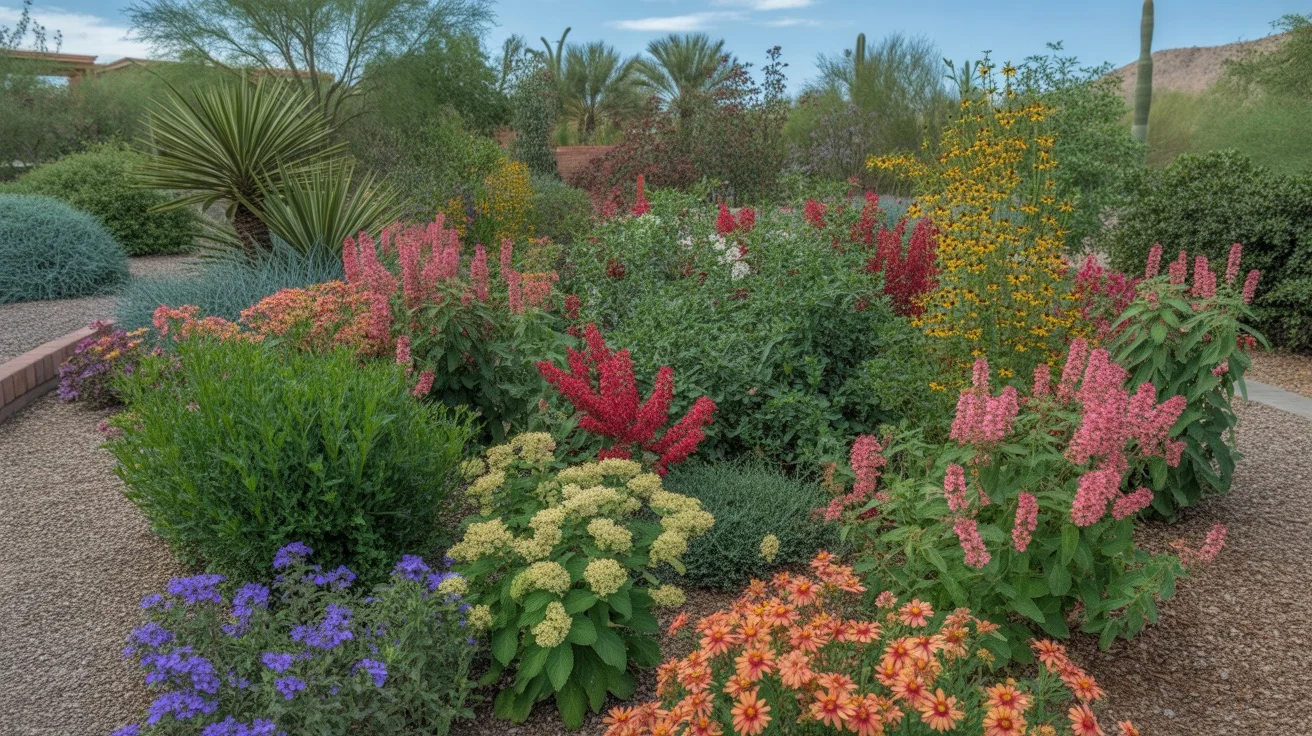
As temperatures rise and plants begin actively growing, it’s crucial to provide them with the right amount of water. Overwatering can be just as damaging as underwatering, so it’s important to be strategic in your approach.
One effective method is to use a drip irrigation system, which delivers water directly to the roots of your plants. This minimizes water waste through evaporation and helps prevent fungal growth on foliage. If you prefer overhead watering, aim to water early in the morning so the leaves have time to dry before nightfall.
To determine when to water, check the soil moisture levels a few inches below the surface. If the soil feels dry, it’s time to water. Keep in mind that different plants have different watering needs, so adjust your schedule accordingly. Newly planted specimens and container gardens may require more frequent watering than established, in-ground plants.
Mulch for Moisture Retention and Weed Control
Applying a layer of organic mulch around your plants is one of the best ways to conserve moisture, suppress weeds, and regulate soil temperature. Use a natural material like shredded bark, straw, or compost, and spread a 2-3 inch layer around your plants, keeping it a few inches away from the base of the stems to prevent rot.
As the mulch breaks down over time, it adds valuable nutrients to the soil, improving its structure and fertility. This means healthier, more robust plants and less work for you in the long run. Just be sure to replenish the mulch as needed throughout the growing season to maintain its benefits.
Some gardeners also opt to use landscape fabric beneath the mulch for added weed control. While this can be effective, it’s important to choose a high-quality, permeable fabric that allows water and air to reach the soil. Avoid using plastic sheeting, as this can impede drainage and lead to root rot.
Keep an Eye Out for Pests and Diseases
As your garden springs back to life, be vigilant for any signs of pests or diseases. Common spring issues in the Southeast Valley include aphids, whiteflies, and powdery mildew. Regularly inspect your plants, paying close attention to the undersides of leaves where many pests like to hide.
If you spot any problems, act quickly to minimize the damage. For minor infestations, you may be able to control the issue by simply removing affected leaves or blasting the pests off with a strong jet of water. In more severe cases, you may need to use an organic pesticide or fungicide.
To prevent problems from taking hold in the first place, focus on maintaining healthy plants through proper watering, fertilizing, and pruning. A robust garden is better equipped to fend off pests and diseases naturally. Additionally, consider incorporating native plants, which are often more resistant to local pests and adapted to the climate.
Embrace Companion Planting for a Thriving Ecosystem
Companion planting is the practice of growing specific plants together for their mutual benefits. Some plants may deter pests, improve soil fertility, or enhance the growth and flavor of their neighbors. By embracing this age-old technique, you can create a more diverse, resilient, and productive garden.
Some classic companion planting combinations include:
- Marigolds and tomatoes: Marigolds are known to repel nematodes and other pests that can damage tomato plants.
- Basil and peppers: Basil is said to enhance the flavor of peppers while also repelling aphids and other insects.
- Nasturtiums and squash: Nasturtiums act as a trap crop for aphids and whiteflies, luring them away from your squash plants.
- Garlic and roses: Garlic helps deter aphids and other pests that commonly attack roses, keeping your blooms looking their best.
As you plan your spring garden, consider which companion plants might work well together. Not only will this help create a healthier, more balanced ecosystem, but it can also add visual interest and diversity to your landscape.
By following these spring garden care tips and giving your Southeast Valley yard some much-needed TLC, you’ll be well on your way to enjoying a lush, vibrant outdoor space this season. Whether you’re an experienced green thumb or a novice gardener, a little effort goes a long way in creating a thriving, beautiful garden that will bring you joy for months to come.

